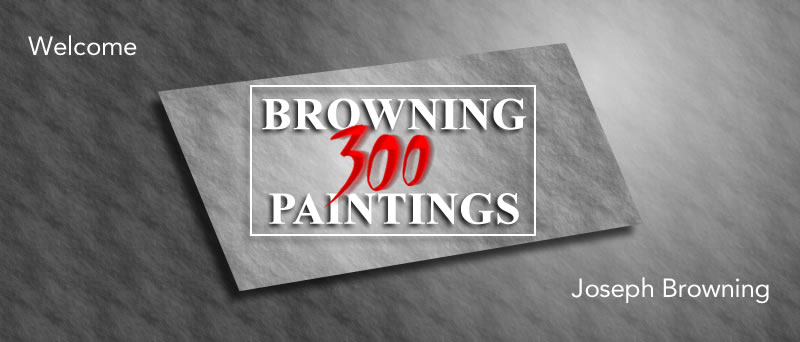
EARLY ART 012 - 022
NOTE: These pages are best viewed on a screen larger than a cell phone.
♣ ♠ ♣
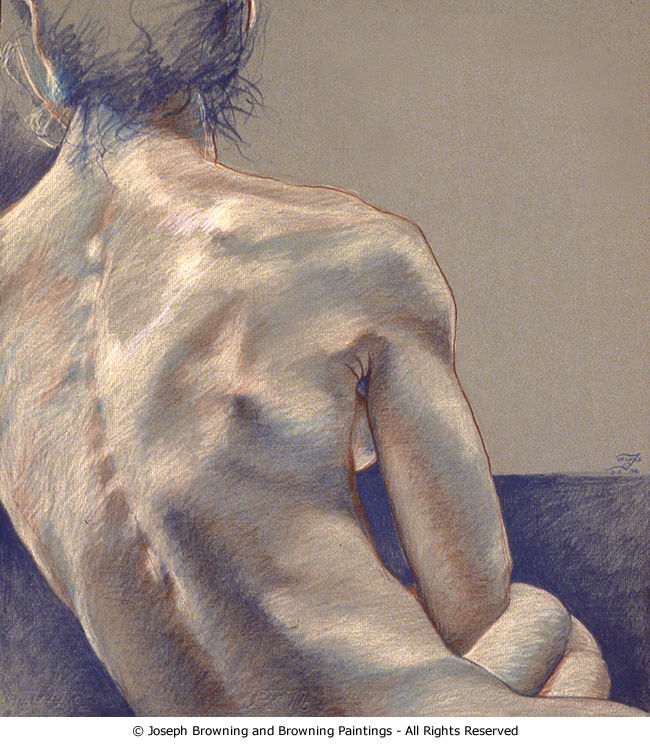
Prismacolor pencil on colored paper
1986 Collection of the Artist
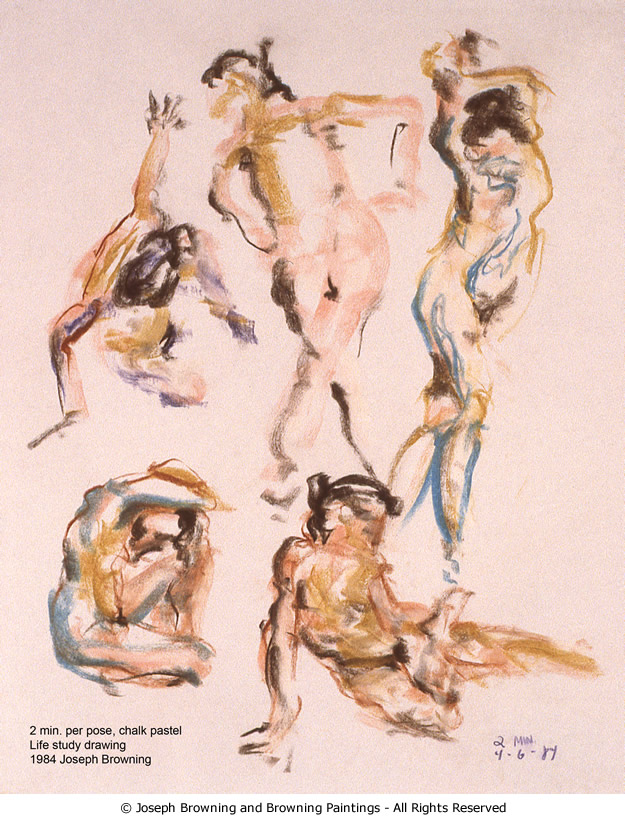
Chalk pastel on colored paper
1984 Collection of the Artist
Two minutes goes by very quickly when you're juggling little pieces of chalk pastel to try and get as much definition of the model's body with color as you can before the pose changes. That was a great day and this ended up being a successful page of poses. I look at it now and wonder how I did it.
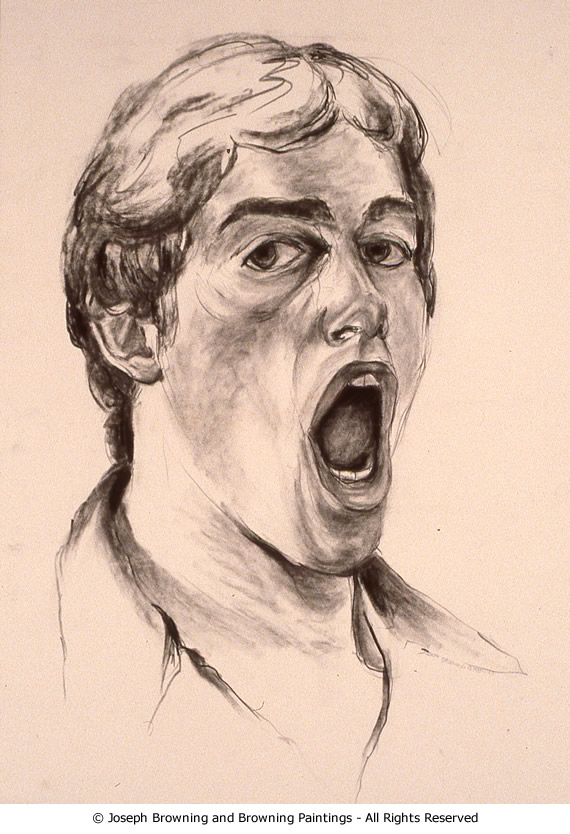
Chalk pastel on paper
1983 Collection of the Artist
I don't remember if this was a school exercise to complete at home or if I just wanted to practice life drawing using a mirror. When I came across this drawing I had forgotten that I even made it. And I am surprised at it's accuracy given the circumstances of its creation. Yet there I was, or am, on paper making a silly face.
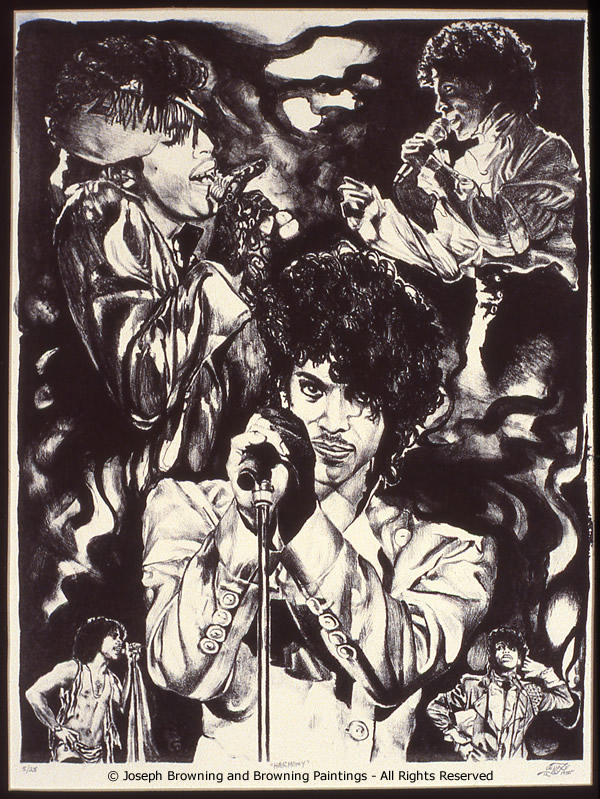
Lithograph print on archival paper - Edition of 28 Prints
1985 Collection of the Artist
For lithography, the image to be printed is drawn with a greasy substance, such as oil or wax, onto the surface of a smooth and flat limestone block. I used black wax pencils specifically made for lithography along with a black oil wash. The stone is then treated with a mixture of weak acid and gum arabic to create an etch that made the parts of the stone's surface that were not protected by the wax/oil drawing more hydrophilic (water attracting). For printing, the stone is first moistened with water to have the water only adhere to the gum-treated parts, making those areas even more oil-repellant. Then an oil-based ink is applied, and sticks only to the original drawing. The ink then gets transferred to a blank sheet of paper, producing the finished printed artwork. More elaborate lithographs can utilize multiple colors with great detail. It was fun making this relatively simple black and white drawing and then be able to print multiple copies of the exact drawing.

At my 1330 Hayes St. studio a friend stopped by and wanted to photograph me. He brought some hair product and a little makeup as he was himself in the theatrical arts, and this is one of the shots he took with Mick Jagger Live & Harmony behind me. Always interesting to participate in different kinds of art...
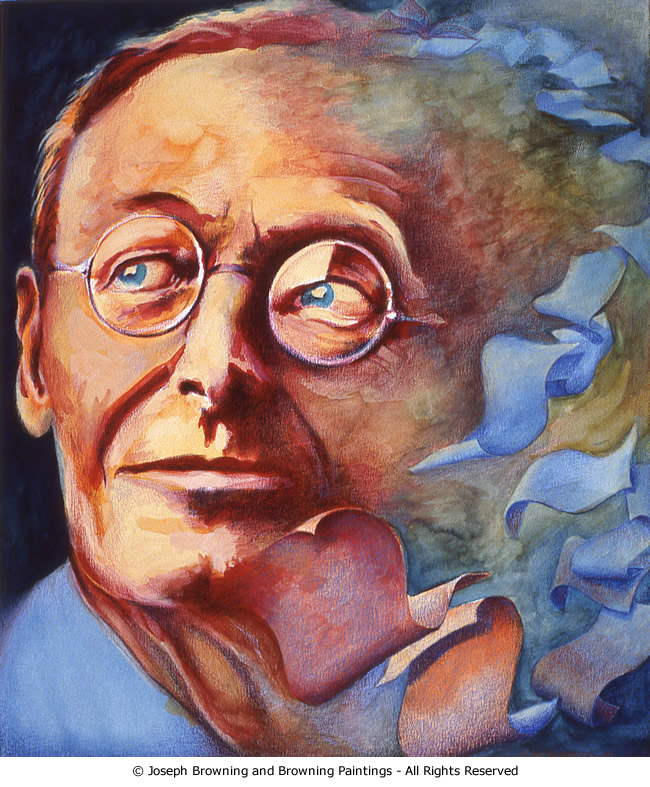
Prismacolor pencil over dye ink colors on paper
1986 Collection of the Artist
The art of illustration allows a greater range of visual options than standard photography. Illustrations by definition illustrate an idea or concept so that an objective viewer can look at it and "read" it to get a story about what's being illustrated or presented. This aspect of being able to tell a story through illustration was what attracted me to learn more about it in the first place. As an artist I am very much a storyteller through the visuals I create in my art. What's fun is that the story can be presented realistically or surrealistically through illustration, where a photograph is usually a straight up realistic portrayal of a subject. And illustration always has that very personal feel that can only come from an artist's viewpoint and style.
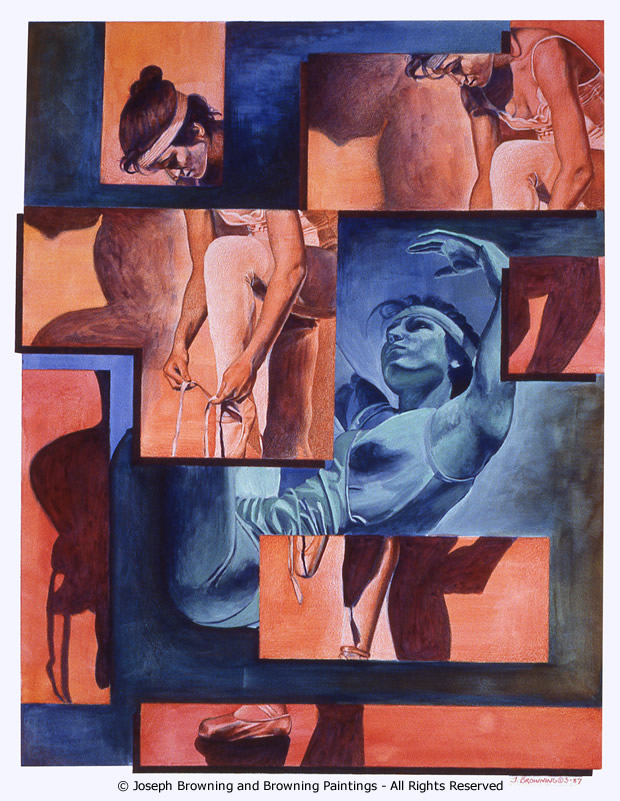
Prismacolor pencil over dye ink colors on museum board
1986 Collection of the Artist
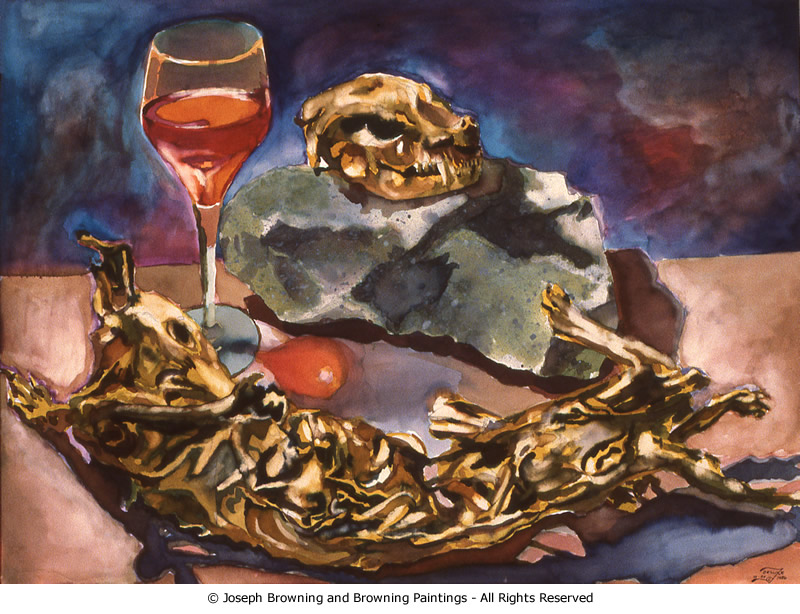
Prismacolor pencil over watercolor on paper
1985 Collection of the Artist
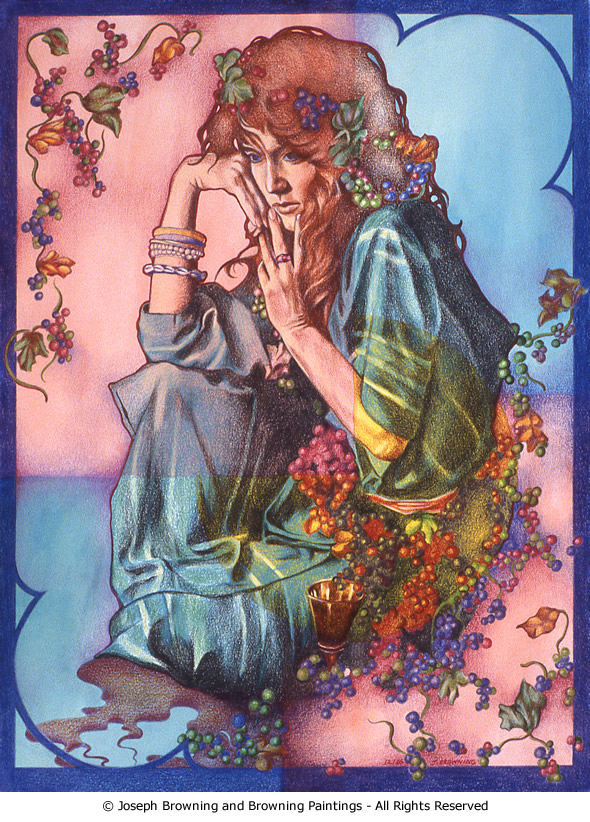
Prismacolor pencil over dye ink colors on museum board
1986 Collection of the Artist
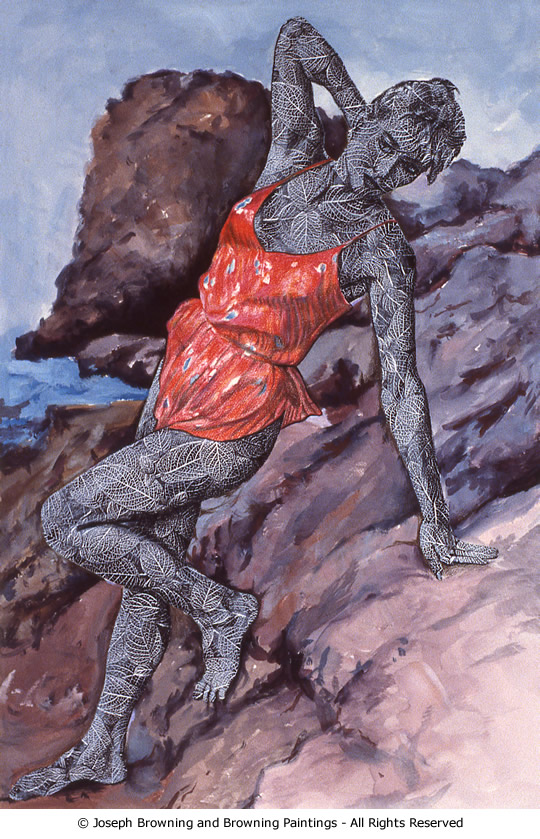
Prismacolor pencil over printed plant pattern over watercolor on museum board
1986 Collection of the Artist
Mixing media in art and illustration is an endless opportunity for picture making. Prior to the use of computers and the internet we did it freehand with knives, pencils and brushes. It was a completely tactile experience during a time when the idea of surrealism still belonged mostly to fine art.
But with the advent of the computer and digital art making in all formats, surrealism has become the norm. Look at any commercial via television or online and you'll witness the impossible interactions between inanimate objects now being fully animated and engaging the viewer with surreal moving storylines 24 hours a day. Surrealism has become so commonplace that no one is surprised by it anymore. It has simply become another version of reality that we all witness and then get inspired to buy something from. Because after all, isn't manipulating each other into commerce what life's all about?
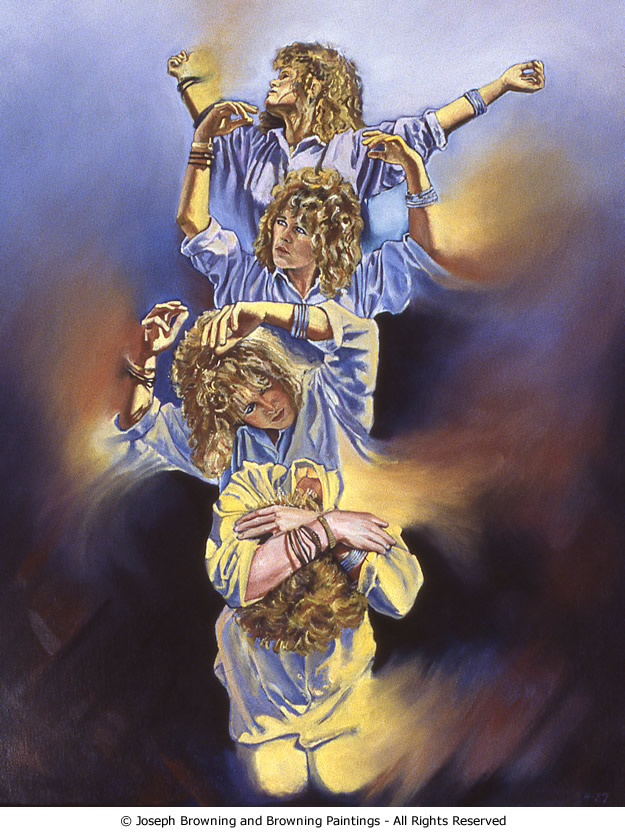
Oil on canvas
1986 Private Collection
At CCAC I met a nice girl named Heidi and we dated briefly. Apart from college we had very little in common. She once made me the most incredible Swedish meatballs from an old family recipe that I'll never forget. She got invited to come back home during the Christmas break by her mother as a surprise for her father's birthday.
Since we were dating at that time she insisted that I join her for the trip, all expenses paid. We rented a car at the Chicago Airport and while driving to her parent's estate out in the suburbs somewhere (dad was a very successful business owner), it started getting dark and there was a blanket of snow on the ground - really stunning to witness in the twilight. All of a sudden "Trip Through Your Wires" came on the car radio - it was the first time either of us had heard it from U2's latest album "The Joshua Tree." I recognized Bono's voice, looked over at Heidi and said, "Is this U2?! This is amazing!" She smiled and nodded in agreement as we drove past one incredible house after another. It was a sublime and wonderful moment in time.
I wanted to return to working with oil paints towards the end of my illustration studies at CCAC. I felt I'd learned a lot about creating representational art via my illustration drawings and I asked Heidi to pose for some photos that I used specifically for this oil painting. I took the photos in the backyard of my tiny one bedroom studio apartment on 9th Ave in San Francisco. This painting was my last illustration effort before graduating. I wanted to get the details correct and I wanted to make sure my painting actually looked like the photos, especially regarding the recognition of the model. I was pleased with the outcome and learned how challenging it was to paint with small brushes to get all the details correct. Again this was all done by eye with no other visual aids, so that made it even more time consuming.
I showed it in a school exhibit featuring a few art works from each of our small class of Illustration graduates, and Heidi's father happened to be on campus to witness our graduation, saw this painting featuring his daughter, and immediately offered to buy it from me. That felt great and of course I obliged.
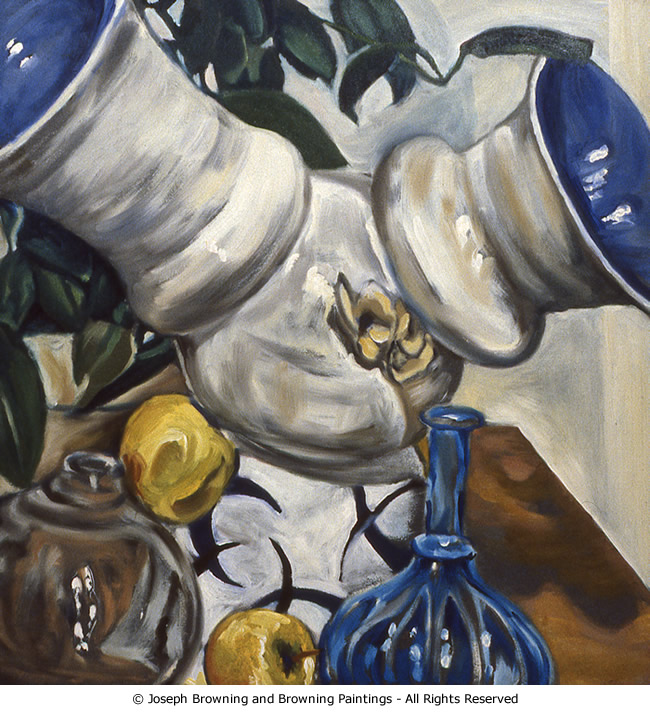
Oil on wood
1987 Collection of the Artist
At the end of my final year at CCAC, the pottery studios were having a sale on students' works that had been completed that year. I came across this strange two-mouthed vessel in white and blue and loved it for it's uniqueness if not for it's confusing purpose. I bought it and brought it back to my apartment in San Francisco and soon painted this picture with it as the centerpiece. I was remarkably happy with the result of this painting. It felt like I had finally figured out realistic oil painting in a way that was easier and more fluid for me than ever before. Eventually I gave the two-headed monster vessel away, and just kept the painting. Afterall, the vessel really didn't serve any functional purpose other than existing in strangeness.
And that's basically what I wanted to do after graduating from CCAC with my Illustration degree: exist in the strangeness of my imagination. Rather than seek the approval of art directors that may or may not still be looking for illustrators to hire, I wanted only to paint pictures that revealed the stories I had bubbling up inside that simply needed to exist as three dimensional objects of art. I don't remember hesitating much, but was definitely mindful of trading in potentially decent paying illustration jobs for carpentry and home maintenance jobs in my spare time while being a painter full time. I'm glad that I didn't spend too much time weighing the pros and cons of this decision as that can be a dream crushing exercise. I was already very clear that becoming a painter of fine art was perhaps the boldest dream there was. A foolish dream many said. An insane and impetuous dream others said. Yet clearly it was a dream I was not having alone, being pushed and prodded by a voice deep inside of me which constantly said, "Go for it!" And to make this absurd dream go from being just a dream to being full on reality all I had to do was start...